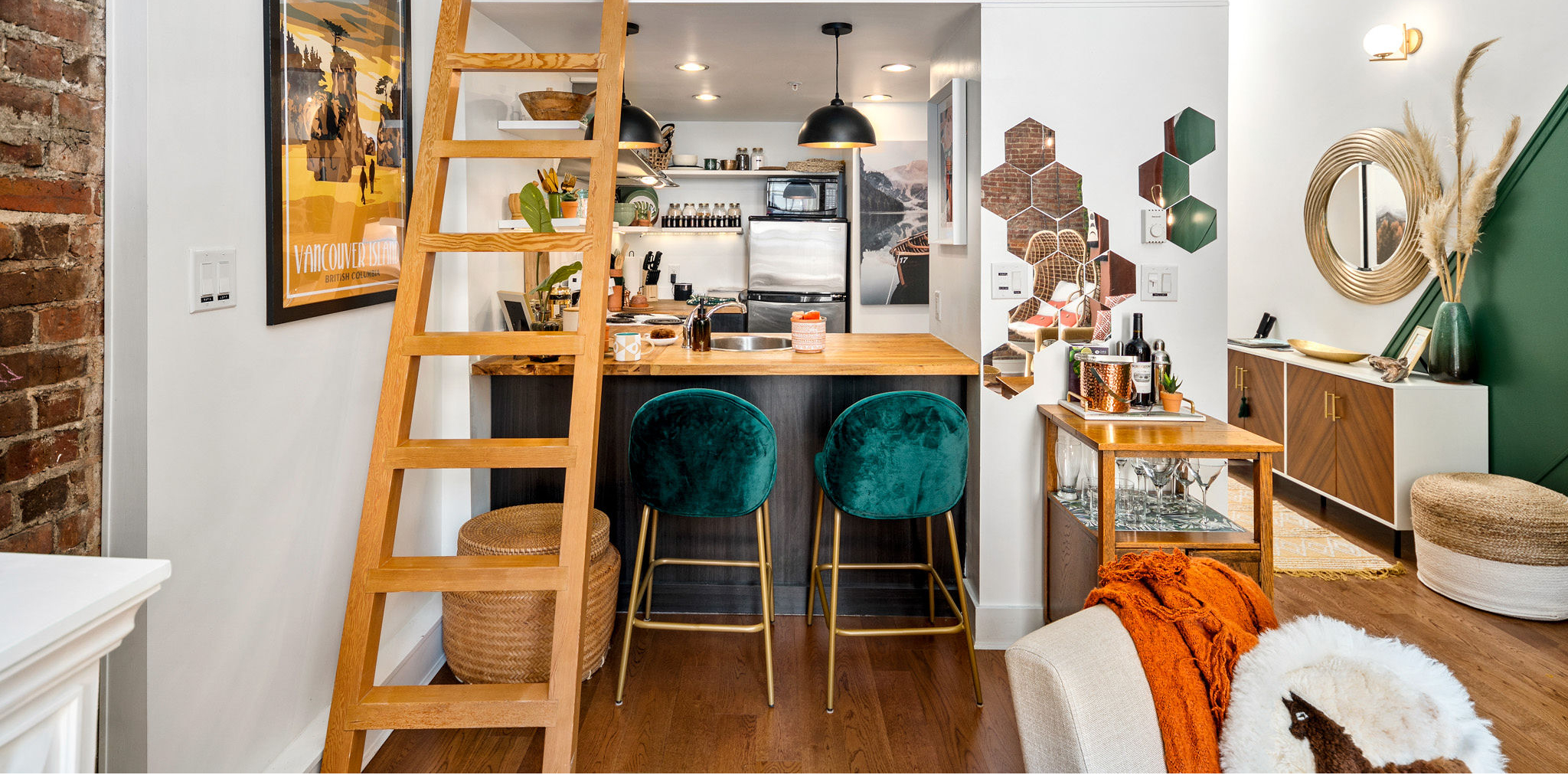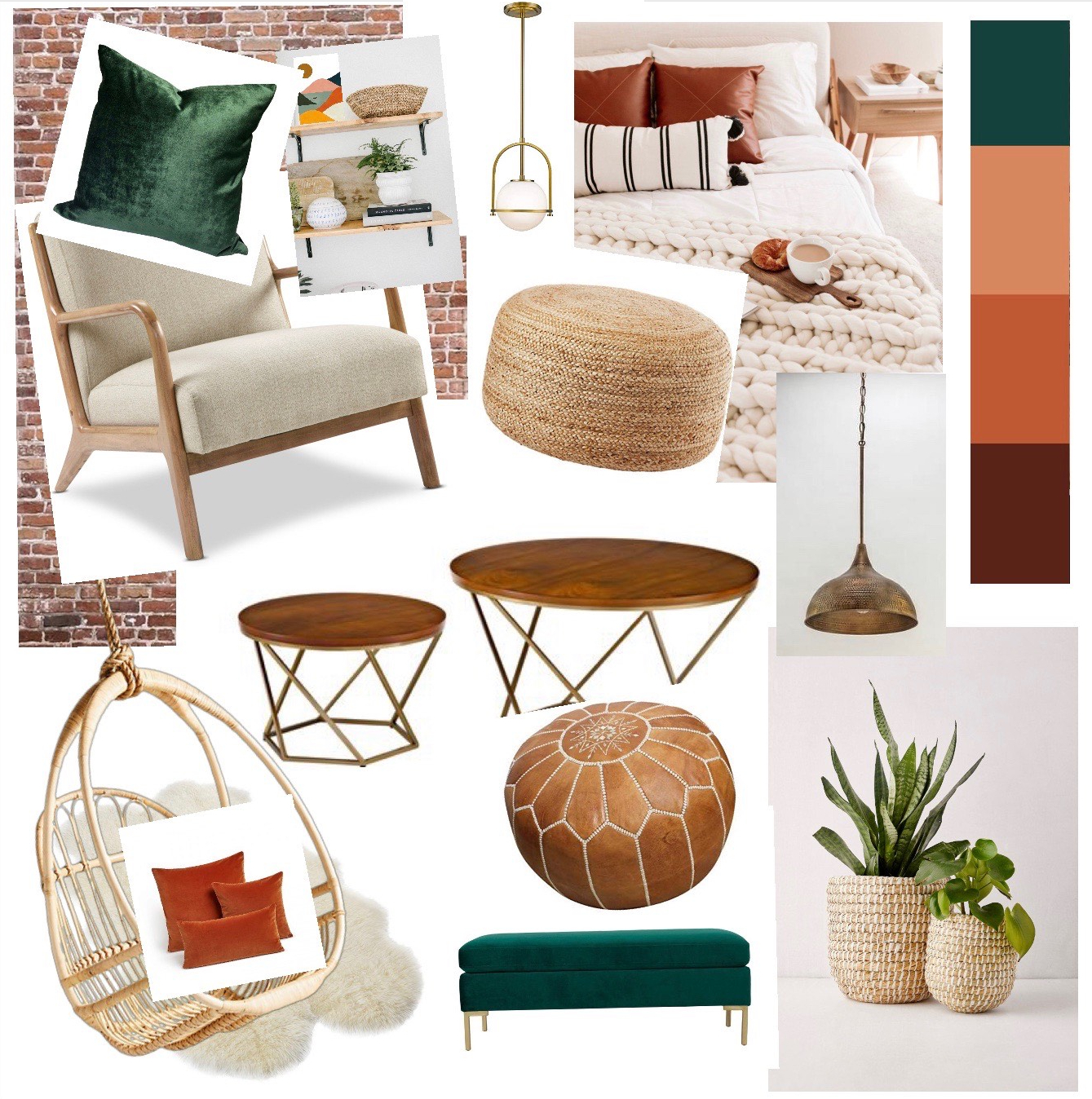How to furnish your short-term rental



Does the idea of furnishing a short-term or vacation rental fill you with dread? Or does the idea excite you? Wherever you lie on the spectrum, we’re here to guide you to make furnishing your rental as painless (and fun!) as possible. A well-designed space is key not only to entice guests to book your space, but to keep them coming back… and telling their friends.
So let’s get to it!The goal is to design a space that satisfies your target guests, and your wallet, with versatile pieces that are affordable, functional, comfortable, stylish, and most importantly - durable (or otherwise, easily replaceable).
In our experience, it is easiest to tackle the process of furnishing your vacation rental step-by-step. This makes the process less overwhelming - and helps ensure nothing is missed - while keeping you motivated as you check off each step towards the finish line.
1. Make a list of everything you need
This is one of the most important steps because once you start buying the bigger pieces of furniture, it is easy to let the smaller items fall through the cracks.
And when we say list everything you need, we mean everything. We also find it helpful to break down your items into must-haves and extras. This way if some pieces go beyond budget you know which items to prioritize.
That said, do not view your “extras” as unnecessary - we think these items are crucial to the guest experience (so we include them in all of our rentals), but identifying what could be cut if needed is nevertheless helpful… just in case.
To see what we mean, here is a sample checklist for the bedroom:
Essentials
Mattress
Box spring
Bed frame
4x pillows
2x duvets
2x duvet covers
3x sheet sets
2x night stands
2x bedside lampsExtras
Throw pillows & blanket
Head board
Rug
2x mattress protectors
4x pillow protectors
2x coasters
Earplugs & sleepmasks
Kleenex
2. Create a budget
Having an overall budget is great, but we find that if you don’t create a specific budget for each item on your list, you will end up going over your total budget, or freak out and cut all of the little things after realizing you have spent too much on the main pieces (happened to a friend of a friend…).
This is why step 1 - listing everything - is so important. If you fail to list everything, you will fail to budget for everything, and the guest experience will suffer. So take the time to set a budget for each item on your list.
We find the easiest way is to break your budget out by room - washroom, bedroom, kitchen, living room, entryway. Allocate a chunk of your budget to each room, then allocate a portion of that budget to each individual item in the room, starting with the bigger (ie. more expensive) items, and working your way down the list.
3. Identify your target market
We all have our own personal style - and that includes the guests who will use your space. If you want to capture their attention, remember to design your space with them in mind.
This is something we find many new hosts forget to do - they design their space how they want to design it, and to their own personal taste, and fail to consider whether their personal style jives well with that of their guests.
This does not mean you cannot inject your own personal style in the space - it is your space after all - but we find the best returns are had when you fuse your personal style with that of your target market.
For example, in our boho-chic loft we recognized that the space had some features that would naturally make it less appealing for older guests - the bedroom is up a ladder with no handrails, and the height of the bedroom is only 4.5 feet. As a result, rather than trying to design for an older crowd (or for all crowds), we focused on designing a space that would grab the attention of younger guests. This way we capture as much of that target market as possible. And while doing so may cut down on bookings from older guests, these guests were less likely to book the space in the first place.
So look at the location, size and features of your space and determine who your target market is - families with children? older couples? younger couples? business people? groups of young professionals on vacation together?
Once you have identified your target market, do some research on their tastes and needs (eg: kid-friendly furniture, romantic lighting, fast internet). We like to look at Pinterest, Instagram, magazines and interior design websites frequented by each target market - and we like to look at past reviews posted by guests within this target market to see their complaints or what they liked about other spaces in the area.
4. Make a mood board
 This step is often overlooked, but we find it makes decision-making that much easier, especially if you are buying used, or utilizing furniture you already have.
This step is often overlooked, but we find it makes decision-making that much easier, especially if you are buying used, or utilizing furniture you already have.
Your mood board should consider the main 3-5 colours of your space, 2-3 textures, the type of metallic accents, and the overall style of furniture - ie. modern, mid-century, vintage, eclectic, boho.
Having a clear vision for the space makes it that much easier to decide on pieces that fit within that vision, resulting in a space that feels purposeful, cohesive, and inviting.
5. Create a floor plan
We notice that first-time hosts often fail to take the time to thoughtfully plan out the layout of their unit. Instead, they immediately start buying furniture they know they need, without first pausing to design a floorplan. This can result in a space that lacks flow, or which doesn’t optimize the available square footage.
We find the best way to determine the optimum layout of your space is to start with the TV. The TV is often the limiting factor when it comes to layout options, so we like to start by outlining all of the TV placement options in the space. Then you can determine how the rest of the furniture could be arranged within each of those options.
To determine furniture placement, we like to measure every inch of your space. We then create a to-scale paper layout, with to-scale cutout paper items like a queen or king-size bed, an average-sized couch, typical-sized accent chair, etc. We then play around with these items on our paper layout, until we end up with a layout that has sufficient open space and flow. We then create a 3D render of the space to visualize what it will end up looking like based on our final layout.
6. Get searching!
With your mood board, floor plan, and budget ready to go, it’s time to start hunting! We like to shop locally as much as possible, and one of our best “hacks” for cutting costs is to buy used. This is especially helpful for items that are usually the most expensive to buy new. Plus, by buying used you won’t cry if something gets damaged.
For example, our biggest money-saving secret? Buying used mattresses! We know what you may be thinking - gross - but have you ever stayed in a hotel?! The minute you put a brand new mattress in a vacation rental, it becomes a used mattress. That is why we love buying super expensive, comfy, used beds. The key is to buy them from peoples’ guest bedrooms - sometimes these mattresses have never even been slept on! But the “stigma” of a used mattress allows us to snatch them up for super cheap. This allows us to purchase a great quality mattress which would otherwise be well beyond our budget, vastly improving the guest experience… while also saving tons of money.
Remember, with a vacation rental all of your furniture is ‘used’ the minute your first guest checks in - so don’t be afraid. We like checking out Facebook Marketplace, Craigslist, Value Village, Salvation Army and local thirft stores.
Think of used furniture as pre-loved furniture that saves you money.
6. Style your space
Once you have your pieces, it’s time for the best part - putting it all together! Here are some of our top design and styling tips:
Style in groups of 3 or 5
When placing items on your entryway table, coffee table, or dining table, we find it best to group items in odd numbers - 3 or 5 works best.
Lighting is key
Spend some time in your space at night, to make sure there is sufficient lighting. Make sure you have reading lights by the couch and bed, and nice bright lights for the living room. Softer (and best of all dimmable) lighting above the dining space is perfect, especially if your target market is couples.
Don’t forget storage
Guests are going to be arriving to your space with luggage - so make sure you provide them somewhere to store it. Depending on the closet space, we sometimes provide guests with luggage racks to help them keep their suitcases off the floor, and make for a more enjoyable experience.
The same goes for storage for clothes - we like to ensure guests have somewhere to hang their clothes, as well as somewhere to fold them and put them away. If your space does not come with any closet space, consider buying a standalone clothing rack and dresser.
Add an extra bed with a pull-out couch
You would be surprised how many guests are willing to sleep on a pull-out couch - so give them the option! Extra guests means extra revenue, so we always ensure our couches perform double-duty. Be sure to test out the comfort of your pull-out couch options by lying on the bed portion yourself, and create extra comfort by adding a foam mattress topper.
Art, art, art!
One easy way to add instant style and charm to your space is with beautiful art. We like to buy all of our art locally, or create it ourselves, and try to pick pieces that tell a story about the city or town the space is located in.
Keep it simple
Remember, guests are coming to enjoy your space, but they want it to feel like their space when they are there. So don’t overcrowd your space - leave counter space open for groceries, and shelves open in the washroom for toiletries - and don’t put anything overly personal in the space.
Did you know we can help furnish your short-term rental? We offer flat-rate and flexible pricing options to suit your needs, and your budget. We will identify your target market, then measure, plan, design and set-up your space. Or, if you prefer, we can simply offer expert advice to help you do it yourself. Get in touch today!
